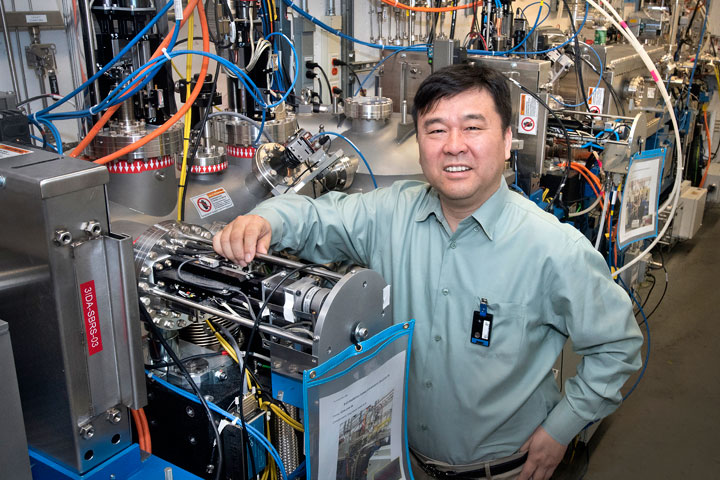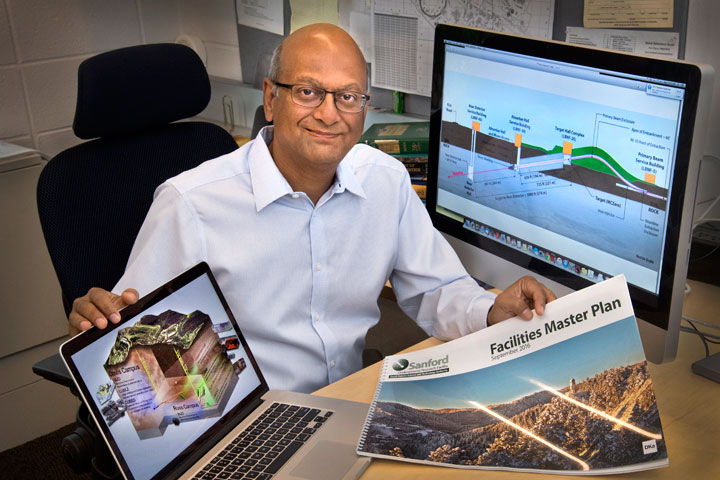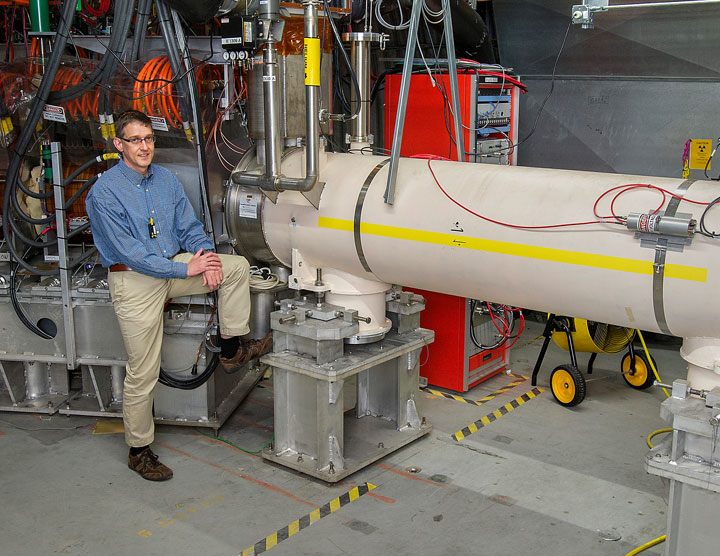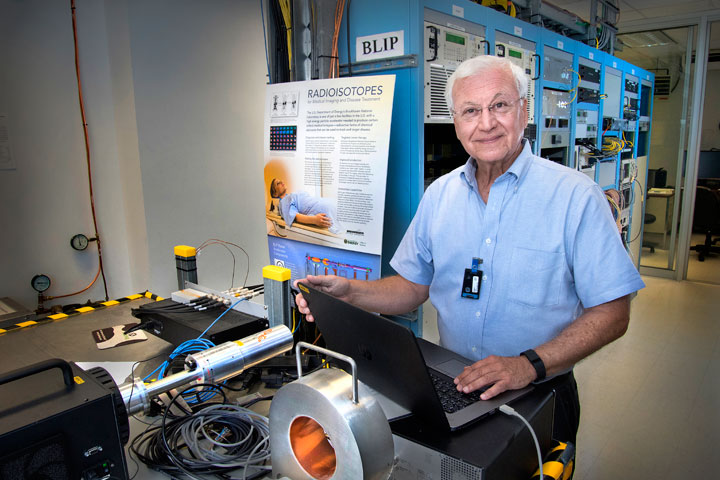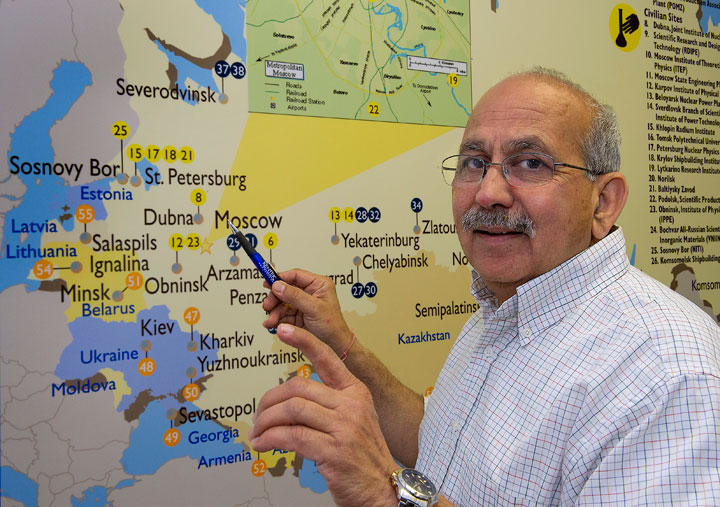2017 Science & Technology Award Recipients
August 7, 2017
Science & Technology Awards are presented to recognize distinguished contributions to the Laboratory's science and technology objectives. The 2017 Science and Technology Award recipients are:
Yong Chu, NSLS-II
Yong Chu is receiving the Science & Technology Award for developing the world-leading hard x-ray nanoprobe (HXN) beamline at NSLS-II. HXN is a flagship beamline that incorporates all the innovative characteristics necessary to achieve world-leading spatial resolution for unprecedented imaging of the structural morphology and chemical composition of a wide range of materials.
Chu joined the NSLS-II project in 2009 as the lead scientist on the HXN beamline. He organized a team of scientists, engineers, and technicians and successfully led the completion of all aspects of the HXN beamline including its design, development, implementation, and testing on time and within budget within the NSLS-II project.
As a result of Chu's effort, the HXN beamline has demonstrated a wide range of contrast mechanisms, including X-ray fluorescence, diffraction, phase contrast, absorption contrast, tomography, and ptychography. Through HXN, Chu has developed a successful scientific research program that has already resulted in 45 papers to date and surely many more to come.
Milind Diwan, Physics Department
Milind Diwan has made important experimental contributions to understand the properties of neutrinos. He also provided leadership for a strong neutrino program in the United States and a central role for Brookhaven in the coming generation of neutrino experiments.
Diwan was instrumental in bringing Brookhaven into the Daya Bay experiment. He recognized the experiment's importance and how to leverage Brookhaven's expertise with liquid scintillator development. The successful observation of non-zero θ13 was critical for establishing the Long Baseline Neutrino Facility (LBNF) and Deep Underground Neutrino Experiment (DUNE) to measure charge-parity violation in neutrinos—to perhaps explain why we exist, as the universe does not contain equal amounts of matter and antimatter that would have annihilated before stars and planets formed.
Diwan 's extensive knowledge of the science and technology, and his indefatigable determination have been critical for LBNF/DUNE. He developed the scientific case, attracted partners from around the world, and helped advance the program through multiple advisory panels as it became the centerpiece of the onshore U.S. High Energy Physics program—the largest international mega-science experiment hosted in the United States.
Wolfram Fischer, Collider-Accelerator Department
Wolfram Fischer is receiving the Science & Technology Award for demonstrating, for the first time, direct compensation of head-on beam-beam interactions by using electron lenses.
When two charged beams collide, electromagnetic forces distort the beams, significantly limiting the luminosity of high-intensity particle colliders. Fischer installed the two electron lenses in Brookhaven’s Relativistic Heavy Ion Collider (RHIC), demonstrating how they compensated for the effect that the colliding proton beams have on each other. Each proton beam has an additional collision with the oppositely charged low-energy electron beam of the electron lenses. Collider physicists had been trying to control beam-beam forces through electron beams for more than 50 years. Fischer overcame several challenges, including noise in the electron beam, to enable such control.
With head-on beam-beam compensation, RHIC reached new peak and average luminosity records for 100-GeV proton-proton collisions. This success lays the foundation for further application of electron lenses in future colliders.
Leonard Mausner, Collider-Accelerator Department
Leonard Mausner is receiving the Science & Technology Award for developing methods to produce, process, and purify radioisotopes used in medical applications and for designing several upgrades to the Brookhaven Linac Isotope Producer (BLIP) that enabled an increase in isotope production.
Physicians routinely use these isotopes in molecular imaging to diagnose heart and coronary artery disease, thyroid disease, pulmonary embolism, and other lung diseases. Mausner had a key role in the design and installation of a beam raster system that became operational at BLIP last year, enabling a 50-percent increase in the production of strontium-82, which is used for cardiac imaging in more than 300,000 patients each year. Recently, he has been researching and developing methods to enable the large-scale production of two isotopes for cancer clinical trials.
Mausner’s contributions have impacted isotope production not only at Brookhaven but also at major accelerators around the world that have copied his facility upgrades.
Upendra Rohatgi, Nonproliferation & National Security Department
Upendra “Kumar” Rohatgi has earned a domestic and international reputation as an expert in the field of thermal hydraulics for nuclear reactors and nonproliferation. His work has focused on preventing nuclear reactor accidents and preventing the proliferation of weapons of mass destruction.
Rohatgi began his career improving the safety of nuclear reactors and he is currently supporting the U.S. Department of Energy and the Nuclear Energy Agency in preparing guidelines for the process to validate international computer codes for analysis of nuclear systems. For more than 15 years, Rohatgi served as the U.S. representative on the science advisory committee for the International Science and Technology Center, which aims to create peaceful, commercial enterprises using the brainpower of former weapons scientists.
As the Brookhaven Project Manager for the National Nuclear Security Administration’s Global Initiatives for Proliferation Prevention, Rohatgi created collaborations between scientists from Brookhaven and the former Soviet Union to pursue advanced research and development in radiation detectors, image recognition, and remote chemical sensing.
2017-12409 | INT/EXT | Newsroom




